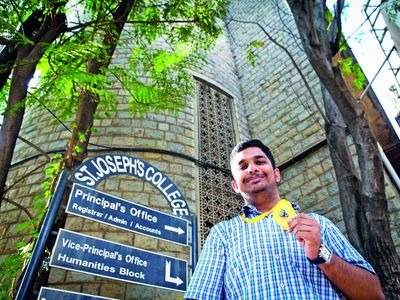Curiosity often makes us question, and that is exactly what pushed Sebastian Thomas, a first year BSc student from St. Joseph’s College to work on his research that won him laurels recently.
Sebastian was awarded the Albertian Best Young Scientist Award and the grand prize in the model exhibition at the International Science Conference held in Kochi earlier this month.
From a group of 5,000 participants across the world, his work on the Fibonacci sequence — the golden ratio pattern and its application to five different fields — received appreciation from the panel.
Speaking to us about his achievement, Sebastian says, “The competition has a lot of place for mathematics. So, when I got to know about it, I started working towards participating in this competition. I discovered unique properties in Fibonacci numbers. The Fibonacci series has a special position in analytical number theory, basically for its pattern and golden ratio. Hence, I began exploring and thought of its application in five different fields.”
The result of Sebastian’s research can be applied in five different fields — in the field of Fourier analysis, in the growth of Hollyhock flowers (which he discovered on the college campus), in genetics where the human genes follow the golden ratio pattern), in the field of ECG and drug monitoring system.
He says, “In the field of ECG, to get an analysis done is very expensive. During an ECG, doctors mainly look at the QT interval and tell the condition of your heart. So, I thought of inter-linking my work to find the QT wave interval and I devised a new mathematical formula and the result coincided with the results of an ECG.”
Maria Thomas, faculty at St. Joseph’s College and guide for Sebastian’s research work calls him the young Ramanujan, and says, “I feel extremely overwhelmed and proud of his hard work. I am proud to say that I am his teacher. I haven’t seen such potential in anyone in the past 14 years of my career. His month-long research work is being applied in five different areas is something extraordinary. Sebastian’s research work is more about real-life applications such as in the field of ECG, which is cost-effective.”
Sebastian hopes that his findings will help the pharmaceutical industries to come up with cost effective methods in the field of research.
The next step, however, he says will be to submit his findings to Massachusetts Institute of Technology (MIT), where he hopes to have an equation named after him.
source: http://www.timesofindia.indiatimes.com / The Times of India / News> City News> Bangalore News / by Sandra Marina Fernandes / TNN / January 12th, 2018
